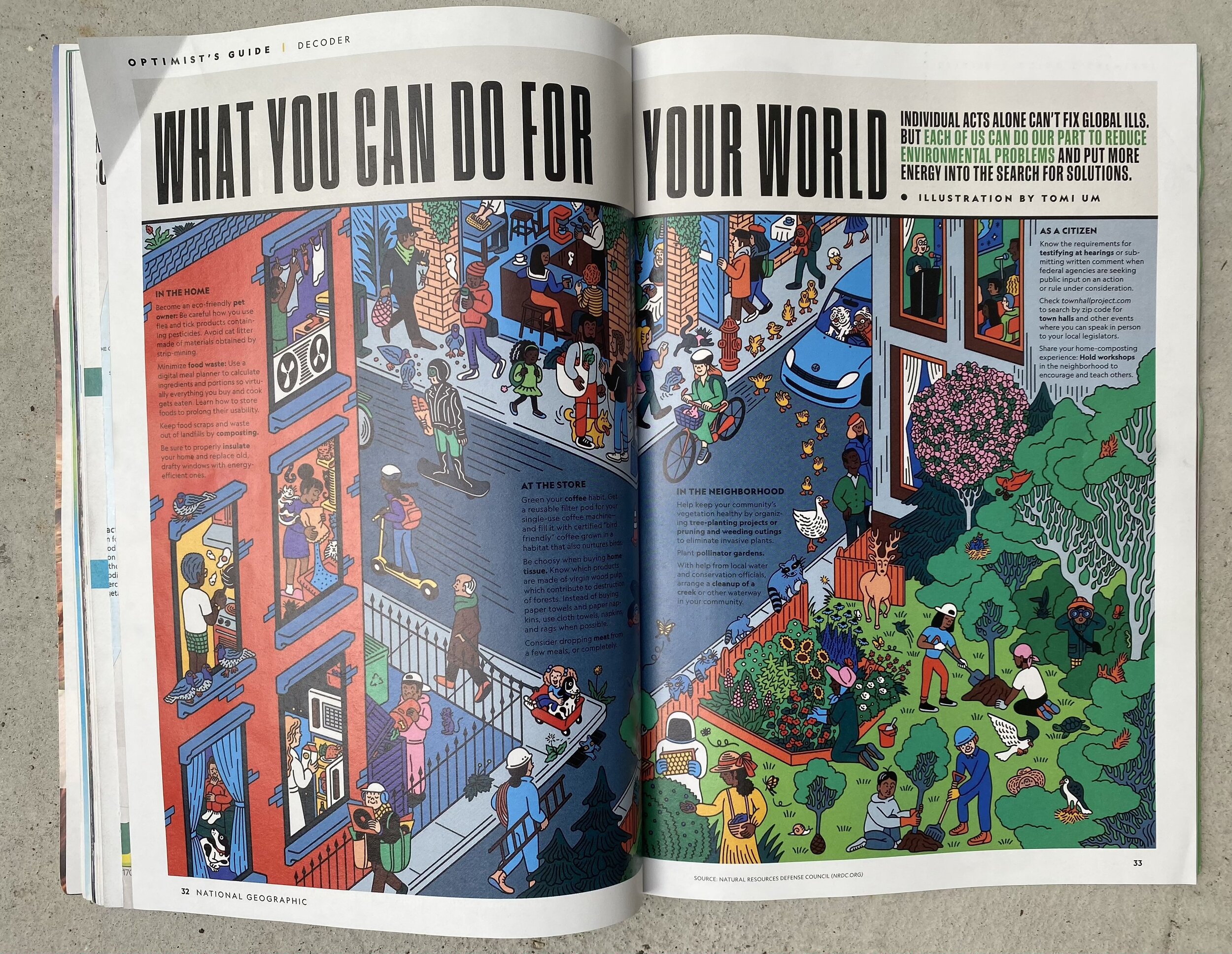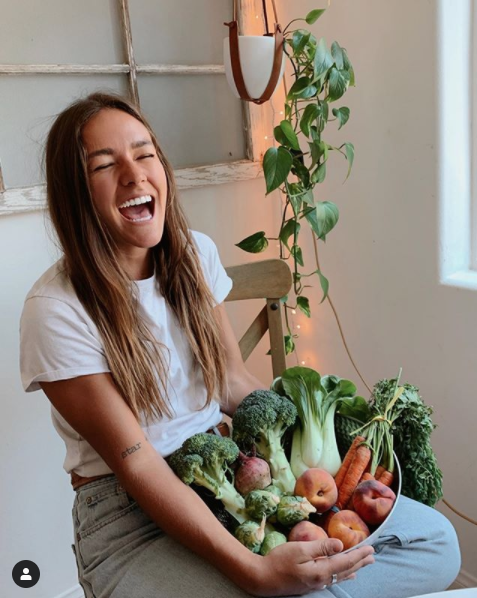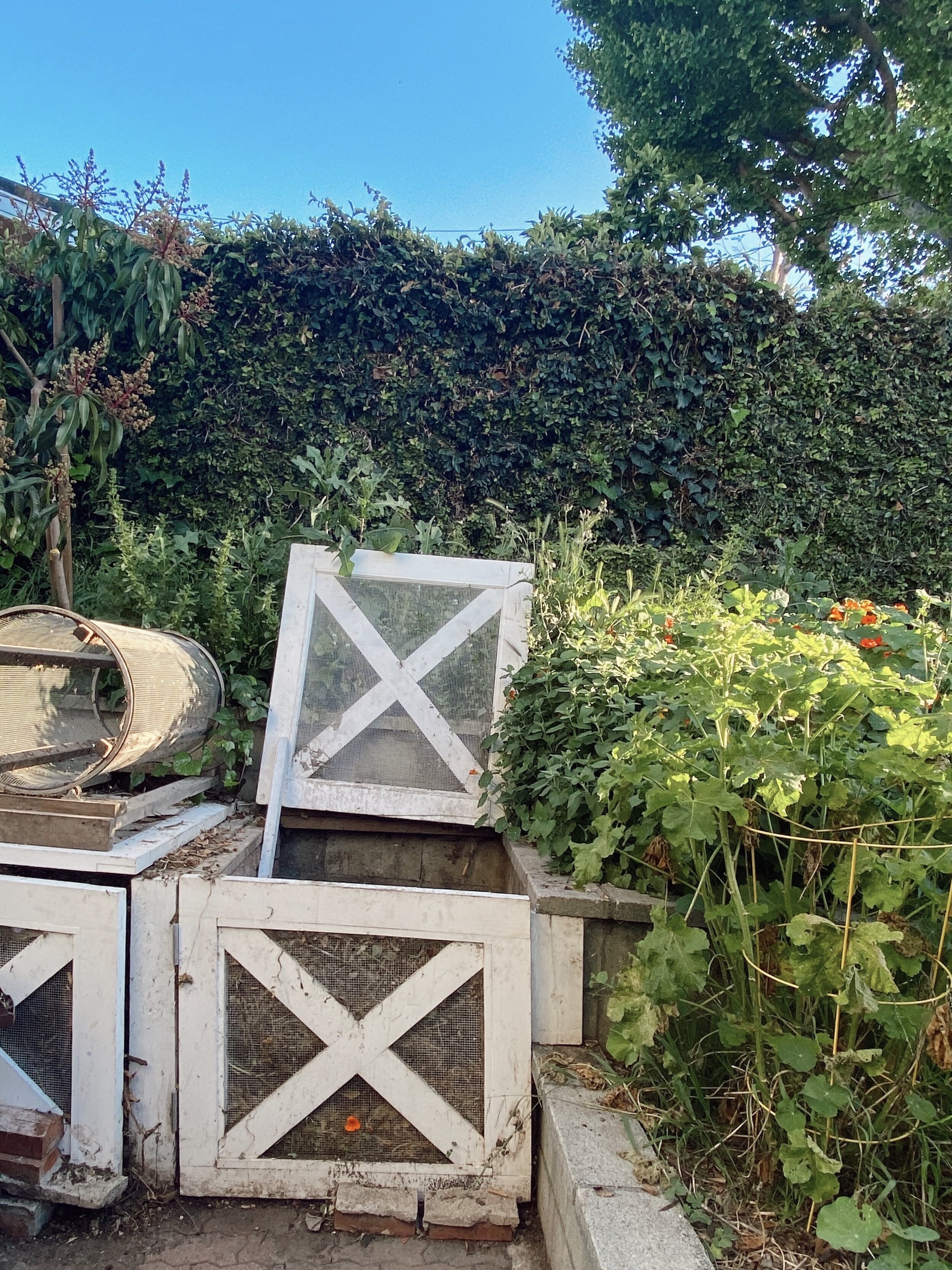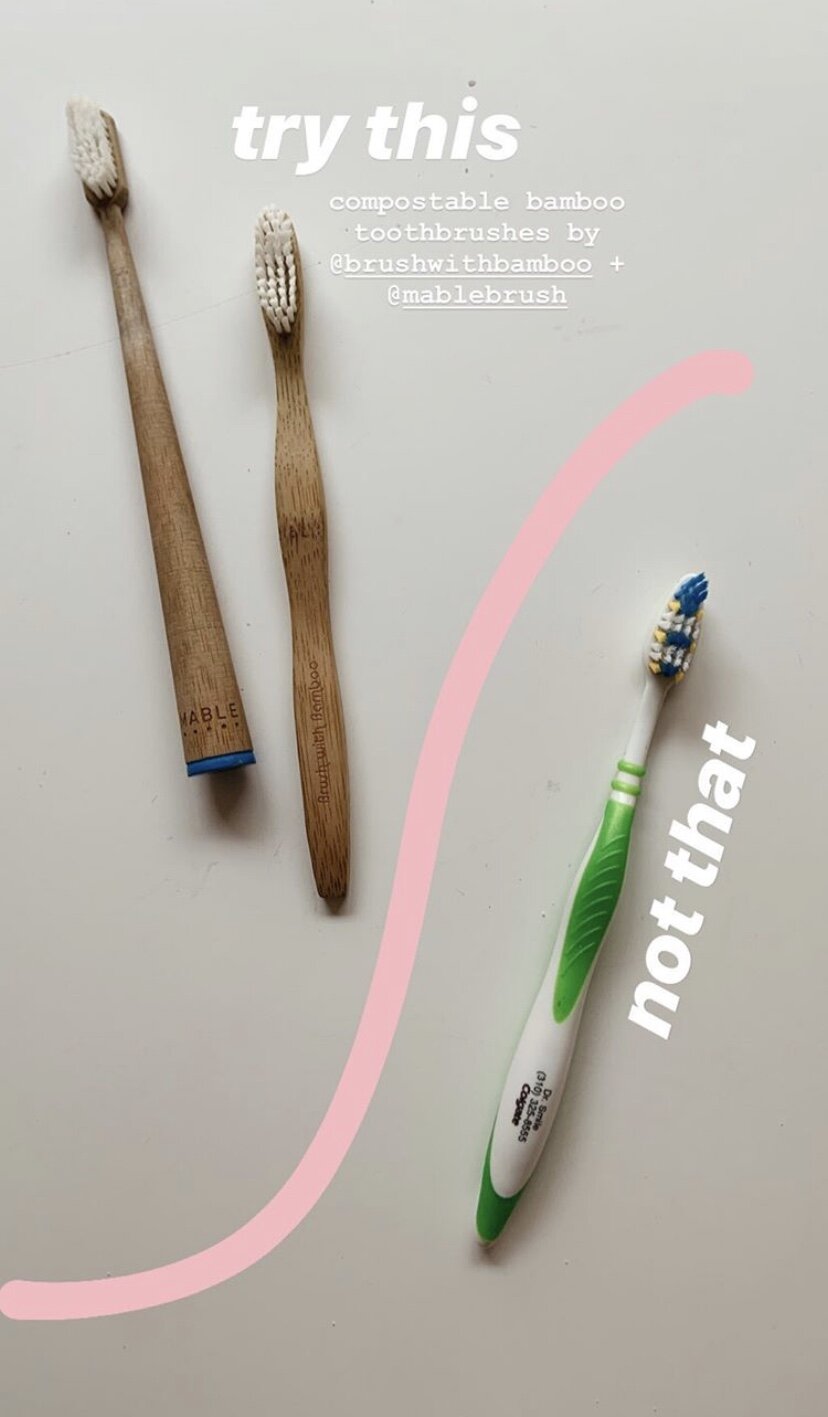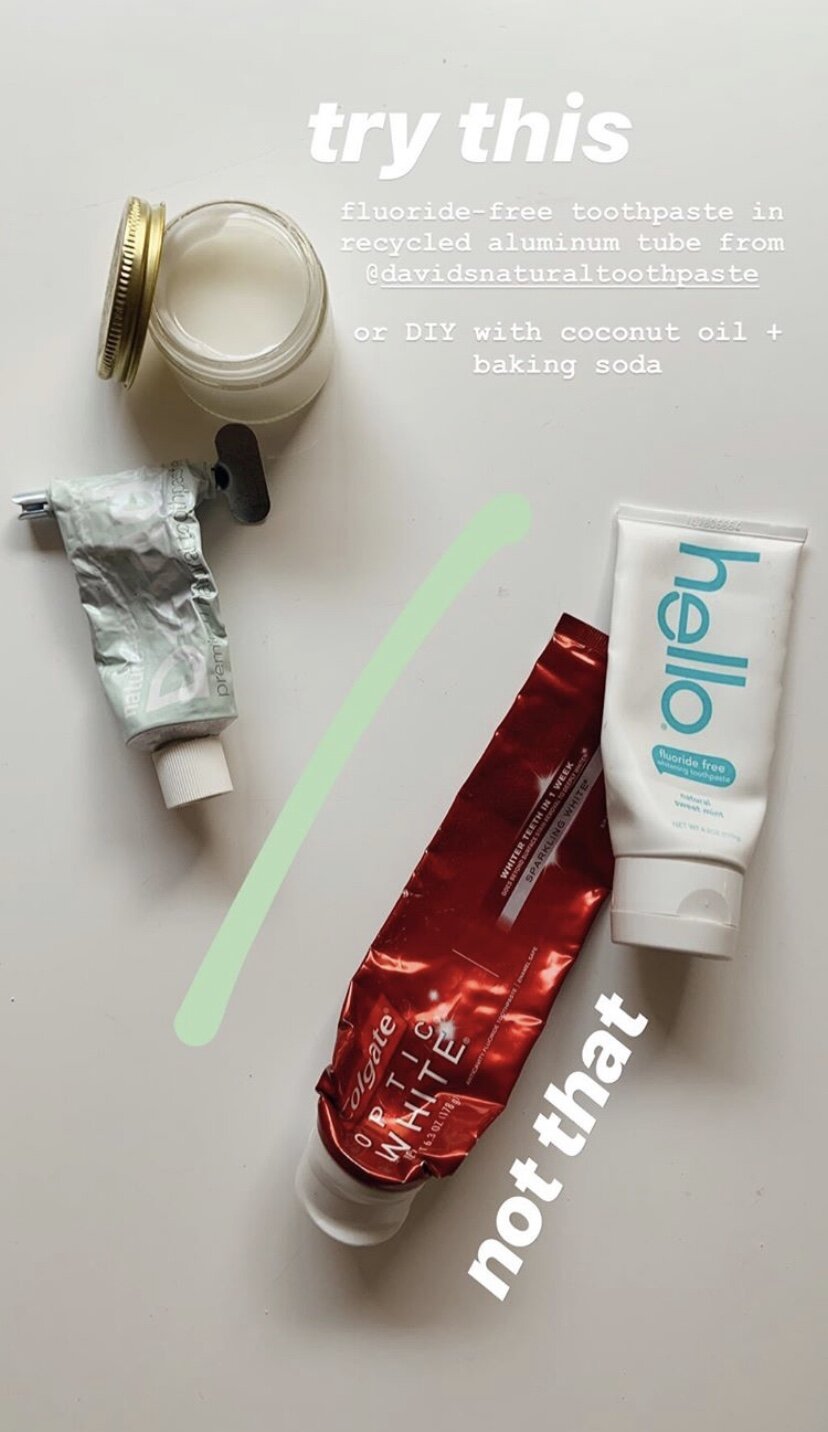4 Sustainable Habits @ Home
I was inspired by this Nat Geo article on sustainable habits, so I wanted to share a few elaborated recommendations so you can kickstart + maintain these habits that will create awareness and combat climate change.
The quote on the top right corner says,
"Individual acts alone can’t fix global ills. But each of us can do our part to reduce environmental problems and put more energy into the search for solutions.”
These habits can be categorized into four buckets:
In the Home
At the Store
In the Neighborhood
As a Citizen
So I figured it could be helpful to share what I do in each of these “buckets” in hopes that you get inspired and adopt some of the practices yourself, while putting your own spin on them. Let’s get to it!
IN THE HOME
(4 TIPS)
First and foremost, MINIMIZE YOUR FOOD WASTE. Did you know that roughly a third of the world’s food is never eaten? Which means land and resources used and greenhouse gases emitted in producing it were unnecessary.
This habit is actually Solution #1 in Project Drawdown as part of the most comprehensive plan to combat climate change. Waste = food is a foundational principle of a circular economy. Think about it, in nature, nothing is wasted. Leaves fall from trees and become nutrition for the soil. We should do the same!
You can do this in THREE ways
BUY UGLY FOODS
I’m a HUGE advocate for Imperfect Produce. They’re first and foremost a food waste prevention service, who happen to deliver “imperfect” groceries (both organic and conventional) to your doorstep for a fraction of the grocery store price. Their “imperfect" inventory comes from farms or retailers that would have otherwise been wasted due to different reasons like surplus, discontinued, cosmetic, etc. They deliver to most of the US, find out if they deliver to your region here.
There are also other companies like Hungry Harvest and Misfit Markets that you can check out. See a longer list here.
You can also support companies that make new food products like beer, granola bars, or sauce out of food waste. Check out some here.
COMPOST
I know this is a tough one to start if you’re unfamiliar with how it works. When food scraps are tossed into the trash, and head to landfills, they release methane gas. Methane is 20x more harmful to the environment than carbon!
Food scraps are also pumped with nutrients that can feed and fertilize soil, which helps grow more plants and sequester carbon from the air. So let’s keep food scraps out of landfills, and get to compostin’
You can do this in a few ways:
You can keep it in a bin in our freezer. It’s 100% odor-proof that way! Then weekly/monthly you can bring it to your local composting center. That’s what I did in my small Santa Monica apartment, and would bring it to my office community garden. Watch this quick 45-sec video to see what that looked like:
You can also start a backyard pile! Depending on how much space you’re working with, you can either build your big wooden compost bin (this one pictured is my moms) or purchase a tumbling compost bin like this one.
Depending on where you live, there are also compost pick-up services. If you’re here in Los Angeles, check out Compostable LA. And if you’re in a city where compost services aren’t offered yet, it sounds like a great time to call your waste company and request it ;)
Some cities also offer local community gardens, where for a small fee you can “rent” a plot of land where you can grow your own plants + produce! Often, these centers have an on-site compost bin, where you can bring your home scraps. Another fun possibility to research (or pitch!) in your community.
More questions? Check out this World Centric full guide on Composting 101.
USE A DIGITAL MEAL PLANNER
If you’re not one who loves cooking, or feels overwhelmed when looking at a fridge full of food and thinks, “what can I make with all of this?” Using a meal planner is perfect for you! I found this list that has a ton of great meal planning apps, and I downloaded the “All Recipes” app to see what it was all about. You can select which meals you want to cook for the week, and it will add all of the ingredients to your shopping list. You can survey your kitchen and see what ingredients you already have, so you’re not duplicating (and potentially wasting) food that you don’t need.
Whether you use a meal planner or not… shop smart and cook smart! Only buy what you need, and NEVER go to the grocery store when you’re hungry lol. Get creative! Throw your old produce into a smoothie or soup. Turn old bread into bread pudding or croutons. You can bake old oatmeal/nuts/spices into a yummy homemade granola. Fermenting and pickling are fun, too!
MAKE YOUR HOME OCEAN FRIENDLY
You can do this by ridding your home of plastic, by either making your own products or buying ones that come in reusable/refillable packaging. Survey your cleaning closet, your bathroom, your garage, and your laundry room… how much plastic can you find and how can we replace those items with sustainable alternatives?
Household cleaners - Say BYE to chemical household cleaners by making your own! Check out my DIY post here:
If you’re not into DIY – that’s cool too. There are cool companies like Blueland that will send you a non-toxic cleaner starter kit and then refill “tabs” so you’re not throwing away bottles anymore. You’d also be surprised how far baking soda can go! Ashlee Piper’s book “Give a Sh*T” has a ton of great DIY cleaning recipes + tips for ya.
Personal products – I actually saved all of my single-use plastic personal products for six months, and then created a “this not that” post where I show you how to simple replace the pesky plastic products you’re currently using for sustainable, refillable, or compostable alternatives. Check that out here:
Another pro tip for sustainability at home - save your glass jars! You will be so surprised to see how many new lives you can give your old salsa jar or juice bottle. Make your own cashew milk, deodorant, toothpaste, or body scrub and store it in one of your reused jars.
Voilá baby! Your home is about to be a beautiful little sustainable mecca. Any questions or ideas – hit me up!
